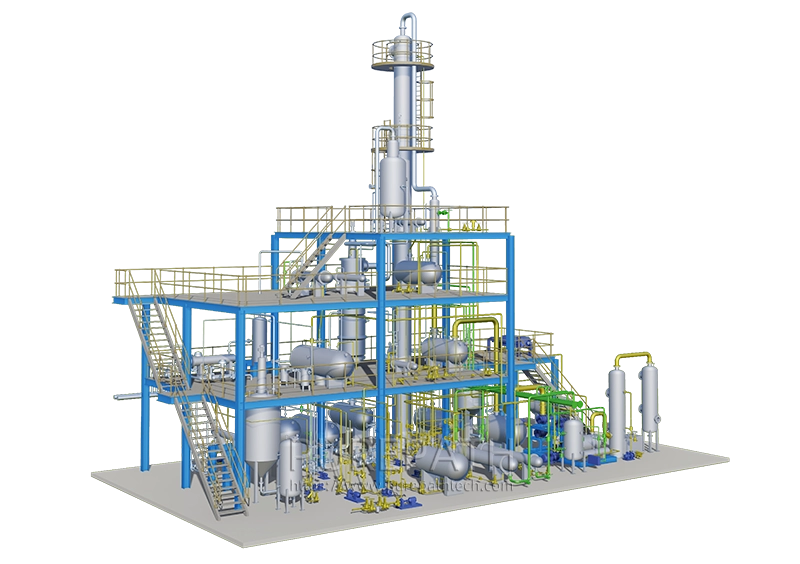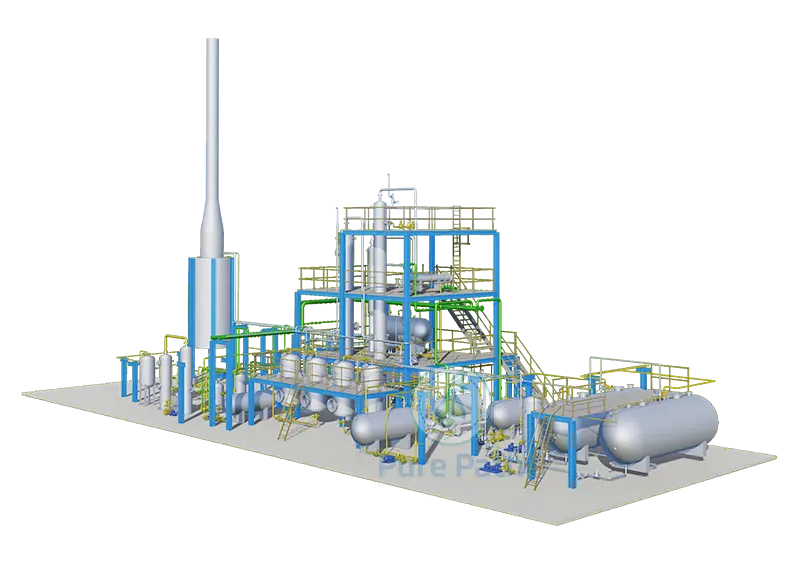The Role of Solvent Extraction Plants in Base Oil Refining
Base oil refining is a critical process in the production of high-quality lubricants. As demands for better performance and environmental sustainability increase, refining techniques must evolve to meet these needs. One such advanced technique is solvent extraction, which plays a pivotal role in removing impurities from base oils, thus enhancing the overall quality and efficiency of the refining process. This article delves into the significant role of solvent extraction in base oil refining, the impurities it removes, the types of extractants used, common solvent extraction equipment, and the advantages of solvent extraction over traditional refining methods.
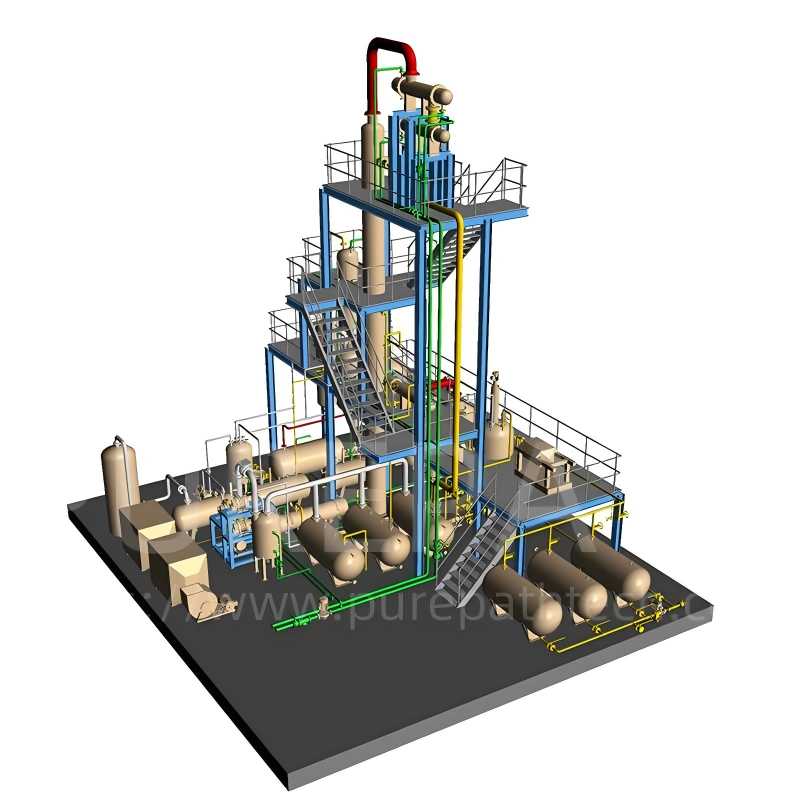
The Role of Solvent Extraction in Base Oil Refining
Solvent extraction plant plays a multifaceted role in base oil refining process, positively impacting product quality, process efficiency, environmental considerations, and versatility. Here’s a breakdown of its key benefits:
1. Improved Product Quality:
- Reduced Aromatics & Asphaltenes: Solvent extraction effectively removes these impurities that can negatively impact lubricant performance.
- Enhanced Viscosity Index (VI): VI is a crucial lubricant property that influences its viscosity change with temperature. Solvent extraction helps improve VI, leading to better performance at extreme temperatures.
- Increased Oxidation Stability: Oxidation can degrade lubricant properties over time. Solvent extraction removes contaminants that accelerate oxidation, leading to a more stable lubricant with a longer lifespan.
- Enhanced Color: Base oil color is a quality indicator. Solvent extraction helps produce a clearer, more desirable final product.
2. Increased Process Efficiency:
- Faster Processing: Modern equipment like centrifugal extractors can significantly accelerate the extraction process compared to traditional methods.
- Reduced Energy Consumption: Advanced solvent extraction systems often incorporate energy-saving designs, lowering overall operational costs.
3. Environmental Benefits:
- Minimized Waste: Solvent extraction processes are designed to minimize waste generation and harmful emissions compared to some traditional methods.
- Reduced Chemical Usage: Optimizing solvent selection and employing non-polluting equipment can significantly reduce the environmental impact of refining.
4. Versatility and Adaptability:
- Wide Range of Feedstocks: Solvent extraction can handle various base oil feedstocks, including recycled oils, providing flexibility for refining diverse crude oil types.
- Adaptability to Impurity Levels: The process can be customized to target specific impurity levels in the base oil, ensuring optimal product quality.
5. Additional Considerations:
- Technical Support: Refineries often utilize technical support from equipment manufacturers to optimize processes, troubleshoot issues, and maintain the extraction systems.
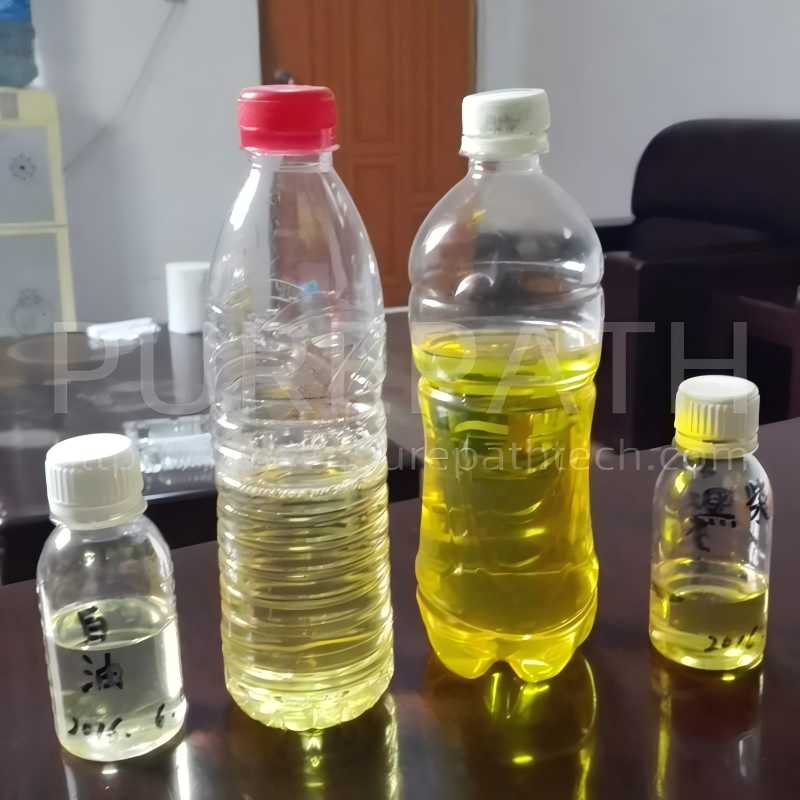
How Solvent Extraction Plant Removes Impurities
Solvent extraction relies on the principle of selective solubility. This means different components of a mixture have varying degrees of solubility in different solvents. Here’s how it removes impurities from base oil as shown in the following table:
| Aspect | Description |
| Target Impurities | Polycyclic Aromatic Hydrocarbons (PAHs) |
| Sulfur (S) compounds | |
| Nitrogen (N) compounds | |
| Oxygen (O) compounds | |
| Resins | |
| Asphaltenes | |
| Extraction Process | Base oil and solvent are brought into controlled contact within the extraction equipment. |
| Impurities transfer from the base oil to the solvent phase due to their higher affinity for the solvent. | |
| The resulting mixture separates into two distinct phases: Solvent-rich phase (extract): Contains the dissolved impurities. Base oil-rich phase (raffinate): The purified base oil. | |
| Solvent Selection | Common solvents include furfural, phenol, and N-methyl-2-pyrrolidone (NMP). Each solvent offers specific properties effective against certain impurities. |
| Post-Extraction Purification | In some cases, the extracted base oil might contain residual solvent and minor impurities. |
| Additional decolorization processes are employed to further purify the product by eliminating these residual contaminants and enhancing the base oil’s color. |
Common Types of Extractants Used in Base Oil Refining
The choice of extractant depends on the specific impurities to be removed and the desired product quality. Several types of extractants are commonly used in base oil refining:
- Neutral Extractants: These extractants are widely used in solvent extraction due to their ability to form solvates with the target impurities, and typically contain functional groups such as phosphates, ketones, and sulfoxides. Examples of neutral extractants include tributyl phosphate (TBP), methyl isobutyl ketone (MIBK), and dioctyl sulfoxide (DOSO). These compounds effectively dissolve impurities while having minimal solubility for the desired base oil components, facilitating efficient separation.
- Organic Acid Extractants: These extractants form stable complexes with metal ions and other acidic impurities, enabling their removal from the base oil, such as organic phosphoric acid, sulfonic acid, and carboxylic acid, are also commonly used in solvent extraction. The selection of organic acid extractants depends on the specific impurities present in the oil and the desired level of purification.
- Amine Extractants: These extractants, including various organic amines and amine salts, are particularly useful for removing nitrogen and oxygen compounds from the base oil, and are effective in solvent extraction due to their ability to form hydrogen bonds or engage in ion exchange with specific impurities. The use of amine extractants can enhance the overall purity and stability of the refined oil.
- Chelating Extractants: These extractants, such as organic chelates and crown ethers, form stable complexes with metal ions, facilitating their separation from the base oil. Chelating extractants are effective in enhancing the quality of base oils by reducing the concentration of metallic impurities.
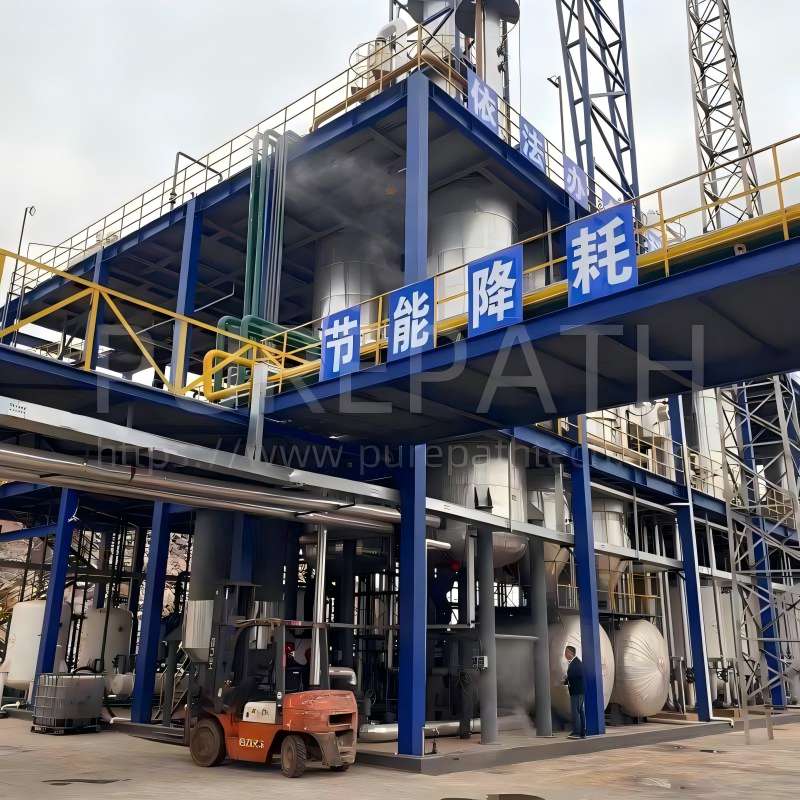
Common Equipment Used in Solvent Extraction Process
Various types of equipment are employed in solvent extraction processes, each with specific characteristics and applications:
- Mixer-Settlers: These devices are staged contact extractors that combine mixing and settling in a single unit. They are used for the initial separation of liquid mixtures. In a mixer-settler, the mixing chamber promotes the dispersion and mixing of the two immiscible phases, while the settling chamber allows for phase separation. This equipment is suitable for various extraction processes and is commonly used in industrial applications.
- Extraction Columns: Including packed columns, sieve plate columns, and rotating disc columns, are used for continuous extraction processes. In these columns, the light phase and heavy phase flow countercurrently, allowing for efficient mass transfer and separation. Extraction columns are widely used in large-scale industrial operations due to their ability to handle high throughput and maintain consistent extraction efficiency.
- Centrifugal Extractors: These units utilize centrifugal force to accelerate phase separation, allowing for the use of finer droplets and enhancing extraction efficiency. These extractors are particularly effective for separating close-density mixtures or solutions with low solute concentrations. The high-speed rotation in centrifugal extractors ensures rapid and efficient separation, making them suitable for large-scale production.
- Ultrasonic Extractors: These units employ ultrasonic energy to increase the contact area between the two phases, improving extraction rates. The ultrasonic waves create cavitation, which disrupts the liquid droplets and promotes better mixing and mass transfer. Ultrasonic extractors are beneficial for processes where increased extraction efficiency and reduced extraction time are desired.
- Microwave Extractors: These units use microwave radiation to heat and accelerate the extraction process. This method is particularly suitable for heat-sensitive substances, as it provides rapid and uniform heating without significant thermal degradation. Microwave extractors are effective in enhancing extraction efficiency and reducing processing time.
- Automated Liquid-Liquid Extractors: These units are modern laboratory equipment designed for automated extraction processes. These devices can perform the extraction, degassing, collection, and discharge steps automatically, improving efficiency and reproducibility. Automated extractors are valuable in research and development settings where precise and consistent extraction is required.
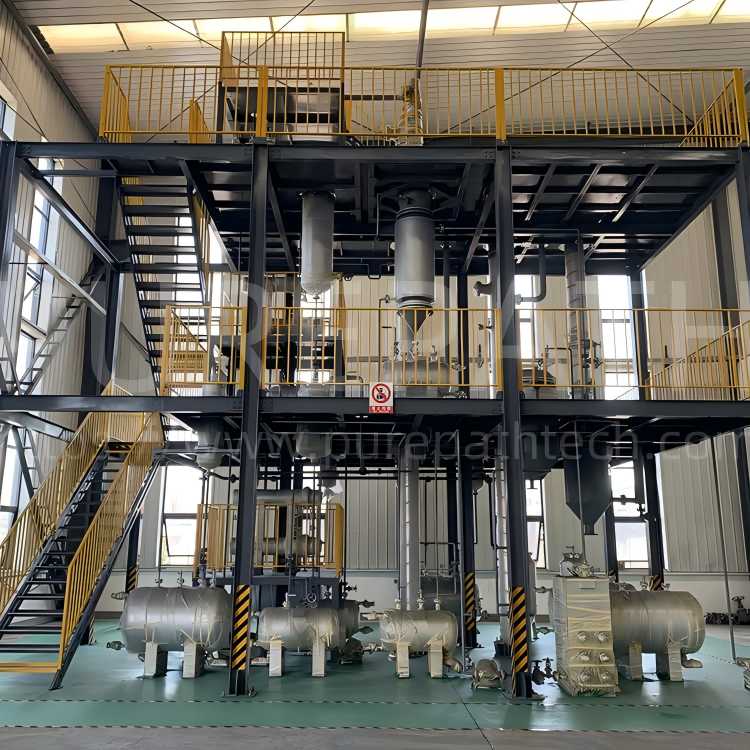
Advantages of Solvent Extraction Over Traditional Refining Methods
Solvent extraction offers several advantages over traditional refining methods:
- High Efficiency and Selectivity: Solvent extraction offers high efficiency and selectivity in separating impurities from base oils. By utilizing the solubility differences of various compounds in different solvents, solvent extraction achieves effective purification. The process can be optimized by selecting appropriate solvent systems and operating conditions, resulting in a rapid and efficient extraction process.
- Versatility and Flexibility: Solvent extraction is versatile and flexible, making it suitable for a wide range of compounds and mixtures. It can effectively separate and purify organic and inorganic substances, as well as biological macromolecules. The ability to adjust the solvent selection, temperature, and pressure allows for the targeted extraction of specific impurities, enhancing the overall purification process.
- Environmental and Economic Benefits: Compared to other refining methods, solvent extraction has lower energy consumption and generates less chemical waste. This environmental benefit aligns with the increasing emphasis on sustainable industrial practices. Additionally, the ability to recycle solvents and optimize process flow reduces production costs, contributing to economic efficiency.
- Simplified Operation: Solvent extraction is relatively simple and easy to master, making it accessible for various applications. The use of centrifugal extractors in particular simplifies the extraction process while maintaining high efficiency. This simplicity and ease of use are valuable in both industrial and laboratory settings, ensuring consistent and reliable results.
- Green and Sustainable Development: Solvent extraction employs common solvents and reagents that are generally environmentally friendly. The process is designed to minimize waste and reduce energy consumption, making it a sustainable alternative to traditional refining methods. The ability to recycle and reuse solvents further contributes to the green credentials of solvent extraction.
- Strong Specificity: Solvent extraction is highly specific, allowing for the targeted separation of specific substances. This specificity is achieved through the careful selection of solvents and optimization of process conditions. The ability to selectively extract impurities ensures that the refined base oil meets high-quality standards.
- Advanced Equipment: The development of specialized equipment, such as centrifugal extractors, has significantly enhanced the efficiency of solvent extraction. These advanced devices are designed to optimize phase separation and improve extraction rates, ensuring high-quality results in a shorter time frame. The continuous advancement of extraction equipment technology continues to drive improvements in solvent extraction processes.
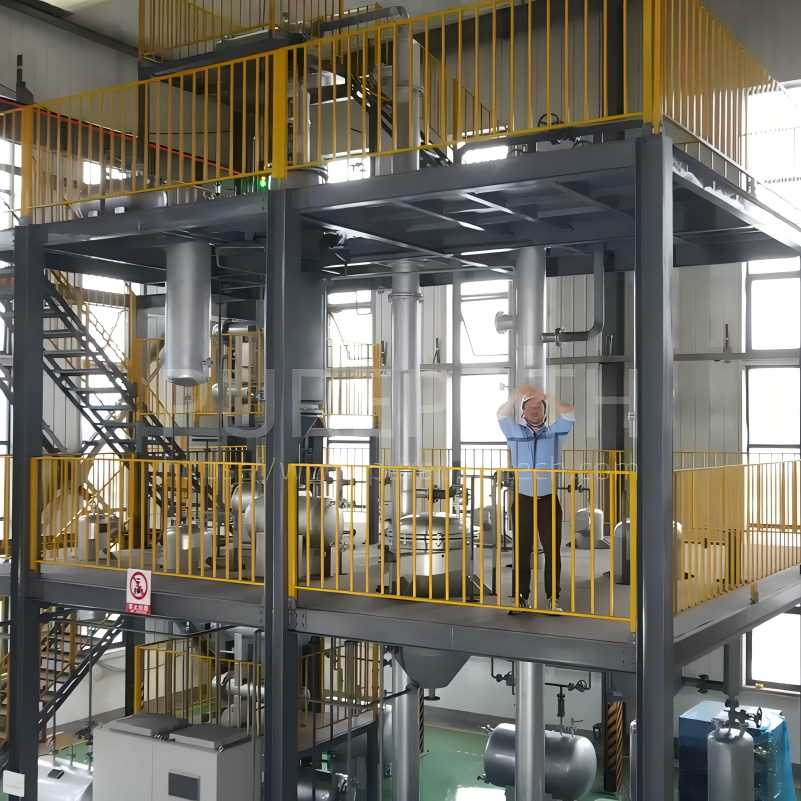
Conclusion
Solvent extraction plant plays a crucial role in base oil refining process, offering numerous advantages over traditional refining methods. By effectively removing impurities, enhancing processing efficiency, and reducing environmental impact, solvent extraction significantly improves the quality of base oils. The versatility, simplicity, and economic benefits of solvent extraction make it a valuable process in modern refining operations. As technology continues to advance, solvent extraction is expected to play an increasingly important role in producing high-quality, sustainable lubricants for various applications.



